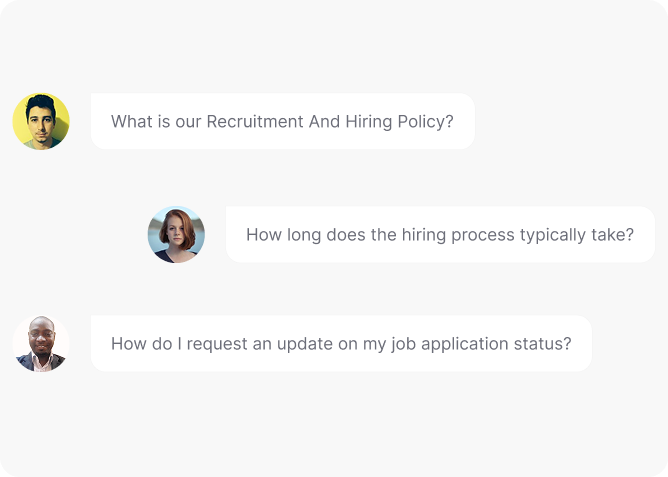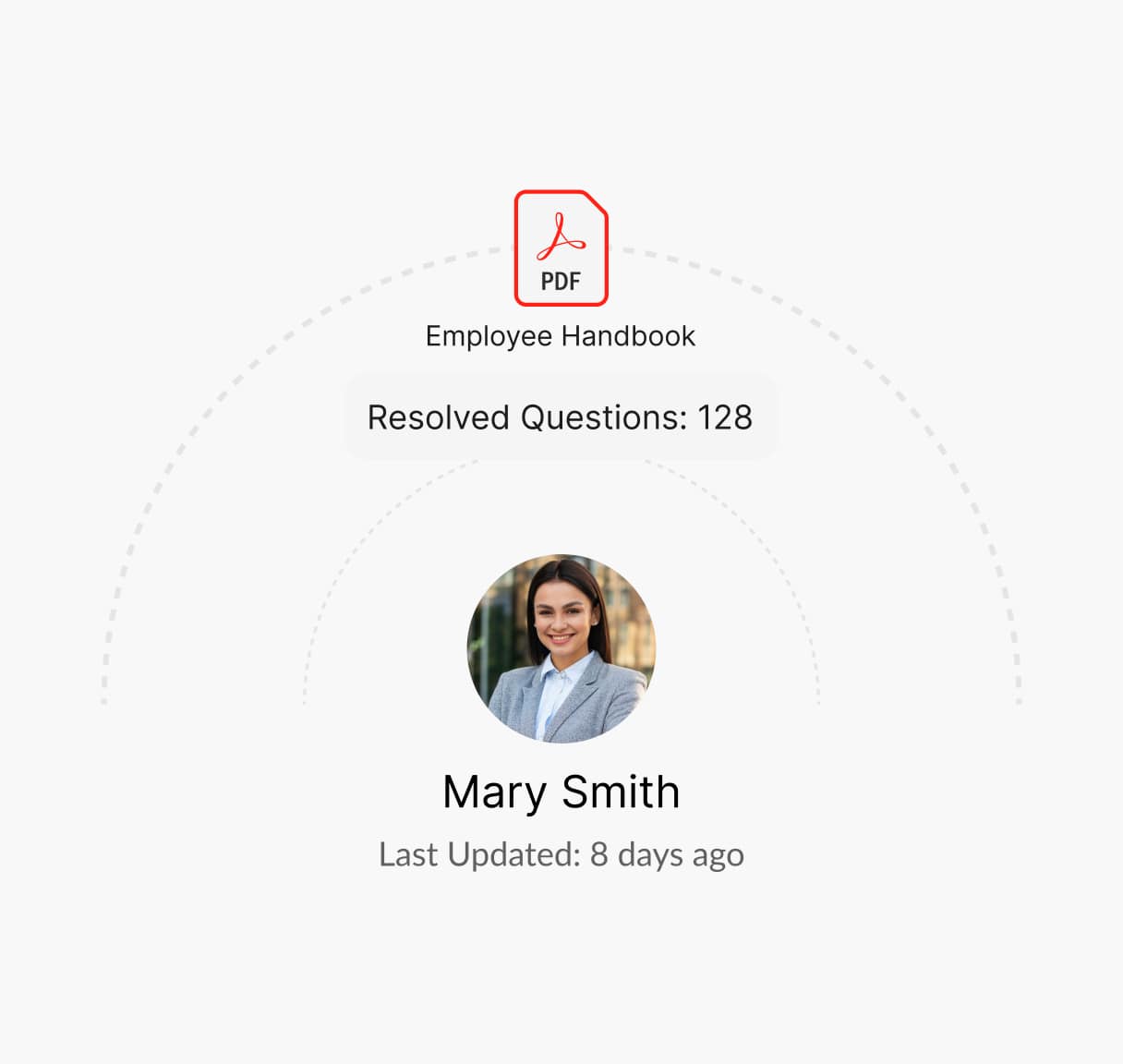Everything You Need to Know About Recruitment And Hiring Policy
A structured hiring process ensures fairness and efficiency. A Recruitment and Hiring Policy defines procedures for job postings, candidate selection, and onboarding, promoting transparency and compliance with labor laws.

What is a Recruitment And Hiring Policy?
A Recruitment and Hiring Policy is an HR document that standardizes the process of attracting, selecting, and onboarding new employees. It covers job postings, interview procedures, background checks, and equal opportunity practices.
A structured hiring policy promotes fairness, compliance, and efficiency in talent acquisition.
Guidelines for Creating a Recruitment And Hiring Policy
A structured recruitment and hiring policy ensures fair, compliant, and efficient hiring practices. Here are some guidelines to consider:
Establish a Fair Hiring Process
Define standardized procedures for screening, interviews, and selection to prevent bias.
Ensure Legal and Compliance Standards
Align recruitment processes with labor laws and anti-discrimination policies.
Enhance Candidate Experience
Provide clear communication and transparent timelines for job applicants.
Incorporate Diversity and Inclusion
Implement strategies to attract diverse talent and create equal opportunities.
Conduct Background and Reference Checks
Verify candidate credentials and past experience to ensure reliability.
Define Internal and External Hiring Procedures
Outline criteria for promotions, transfers, and external hiring.
What is Covered in a Recruitment And Hiring Policy?
An effective Recruitment And Hiring Policy should include the following:
Job Posting and Advertising
Define where and how job openings will be posted, ensuring visibility across multiple hiring platforms.
Application Screening Criteria
Establish clear standards for reviewing applications, including minimum education, experience, and skill requirements.
Interview and Selection Guidelines
Standardize assessment methods, including behavioral interviews and technical evaluations, to ensure fairness.
Reference and Background Checks
Detail the disciplinary measures for non-compliance, suc Include verification steps such as employment history checks, criminal record screening, and credential validation.
Offer and Onboarding Process
Detail the steps for extending job offers, negotiating salaries, and onboarding new employees smoothly.
Diversity Hiring Strategies
Implement initiatives to attract candidates from different backgrounds and ensure equal hiring opportunities.
Compliance with Employment Laws
Outline adherence to local and federal labor laws, ensuring ethical and legal recruitment practices.”h as suspension or termination.
Need help creating a Recruitment And Hiring Policy?
How Winslow helps HR pros save time on responding to recruitment and hiring policy questions
Managing hiring-related inquiries can be time-consuming, but Winslow, your AI-powered HR assistant, simplifies the process:

Instant answers anytime
Winslow makes your Recruitment and Hiring Policy easily accessible via Slack, Teams, or email. Employees and hiring managers can instantly check job posting procedures, interview guidelines, and candidate evaluation criteria—ensuring a consistent and compliant hiring process.
Personalized Support
Winslow instantly answers employee questions, including those about your Recruitment and Hiring Policy, ensuring clarity on background checks, equal opportunity guidelines, and onboarding timelines.


Analytics and Insights
Winslow tracks policy-related queries, helping HR teams identify trends and common concerns. This data enables organizations to refine their policy, improve reporting channels, and address recurring issues proactively.
Save Time on Recruitment and Hiring Policies with Winslow
Managing hiring inquiries can slow down HR teams. Winslow automates responses to questions about job postings, interview processes, and candidate evaluations—streamlining communication and ensuring a smooth hiring experience.
Frequently asked questions
Have further questions about Winslow, contact us at sales@usewinslow.com
How should HR teams structure hiring policies to attract top talent while ensuring diversity and inclusion?
HR should implement structured hiring processes that emphasize skills-based assessments over subjective judgments. Blind resume screening can reduce unconscious bias, and standardized interview questions ensure fair evaluations. Partnering with diverse hiring platforms and setting measurable DEI (Diversity, Equity, and Inclusion) goals in recruitment efforts also improve representation.
What balance should HR strike between cultural fit and skills-based hiring?
HR should define cultural fit based on company values and behaviors, not personal similarities. Skills should take priority in hiring decisions, with cultural alignment assessed through behavioral questions rather than vague subjective impressions. This ensures diverse perspectives while maintaining organizational alignment.
How should HR handle employee referrals to ensure fairness in the hiring process?
HR should enforce standardized evaluation processes for all candidates, regardless of whether they are referrals. Referral bonuses should be structured transparently, and hiring managers should be required to justify hiring decisions with documented evaluation criteria to prevent favoritism.
What strategies should HR adopt to streamline hiring while maintaining compliance with employment laws?
Using applicant tracking systems (ATS) can automate compliance checks, ensuring equal opportunity hiring. Training recruiters on EEO (Equal Employment Opportunity) laws and maintaining detailed hiring records protects against legal risks.
How should HR measure the success of recruitment efforts beyond just time-to-hire?
HR should track quality of hire (performance over time), retention rates, candidate experience feedback, and diversity hiring metrics to evaluate long-term recruitment success.
Additional resources
Device Usage Policy
Managing employee leave effectively is vital for maintaining workforce productivity and compliance....
Learn moreconfidentiality policy
Protecting sensitive information is crucial. A clear Confidentiality Policy outlines guidelines for...
Learn moreclaim reimbursement
Ensuring fair compensation for expenses is key. A clear Claim Reimbursement Policy...
Learn more




